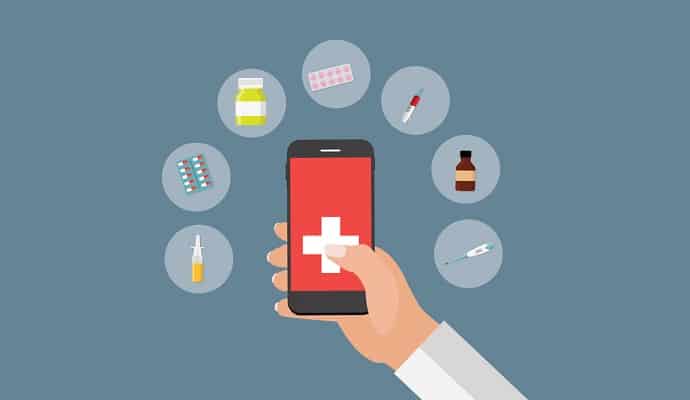By Mustafa Öger, VP of Product, JotForm
The COVID-19 pandemic caused a mass shift to digital tools in nearly every sector of society, including the healthcare industry.
Over the past year, telehealth capabilities have significantly increased, with 95% of health centers reporting usage of telehealth tools during the pandemic, compared to 43% before the pandemic, according to CDC data.
But technology presents a double-edged sword for care providers. On one hand, virtual tools can offer greater convenience and accessibility for both patients and doctors. On the other hand, online tools can lack a sense of personal connection and are susceptible to security breaches, putting care providers at risk for expensive fines.
In 2020 alone, more than $13.5 million in HIPAA settlements and civil monetary penalties were paid to the Department of Health and Human Services’ Office for Civil Rights. Fines range from $100 to $50,000 per violation, depending on the severity of the offense.
In the post-pandemic healthcare environment, medical professionals need to understand how to successfully manage a virtual practice, while simultaneously protecting themselves from liability with the right HIPAA-compliant processes and apps.
Virtually managing a medical practice
While many physicians understand that implementing seamless technology experiences for their patients and staff is essential to the future of their business, more than four out of five physicians think these elements are lacking in their practice, according to Deloitte’s 2020 Survey of US Physicians.
The pandemic forced healthcare organizations to reassess the way they interact with patients, and vice versa. A number of tech companies used this as a catalyst to create workflow tools that enable the secure transfer of sensitive patient information from any device, anywhere in the world. For instance, the JotForm Health app, which provides access to HIPAA-compliant forms, templates and workflow systems, has already been downloaded more than 4,000 times, accepted nearly 2,000 payments, and been used to schedule over 9,000 appointments since launching earlier this year.
One of the easiest places to start a transition to virtual care is by automating the scheduling system. Before opening up their entire calendar, physicians should first determine how many patients they typically book well in advance, and how many they see the same day or the next day. This will help create a schedule that accounts for all scenarios and maintains a normal workflow.
Providers should also ensure that their e-forms are HIPAA compliant, including patient intake questionnaires, medical releases, records custodian agreements, prescription refills, and payment requests. If they partner with any third parties to manage or store patient health information (e.g., medical billing companies, call centers, online form databases, cloud storage systems), these partners must also sign a business associate agreement that outlines how they will maintain HIPAA compliance.
Moreover, when communicating with patients after or in between visits, clinicians should use a HIPAA-compliant, encrypted messaging service as opposed to regular text messages or emails.
HIPAA-compliant mobile apps
Since the start of the pandemic, there has been a 25% rise in health app downloads worldwide, according to a report by ORCHA. Below are some examples of HIPAA-compliant apps that medical practices are already using to transform their businesses.
For patient communication
Care Messenger and OhMD allow providers to securely message patients and other health professionals by sending HIPAA-compliant texts, photos, and documents. These apps encrypt sensitive information and require users to authenticate their identity before accessing text messages.
For workflow and data collection
The JotForm Health app safely collects sensitive medical data online with custom HIPAA-compliant forms that automatically encrypt submissions, guaranteeing the privacy of patient health information. Physicians can schedule appointments, create intake forms, collect payments and share sensitive information, all from the app.
For remote team access
LogMeIn and TeamViewer are both multi-platform remote access programs that offer medical teams the ability to stay connected through the use of access controls, user authentication, audit controls and transmission security.
For payment processing
Square is top rated for payment processing thanks to its HIPAA-compliant credit processing service that includes a business associate agreement at no charge.
For web hosting
When it comes to HIPAA compliance, not all web hosting companies are created equal. Atlantic.Net is a veteran web hosting platform with a solid reputation that has built its business around secure, compliance-oriented hosting services.
Workflow management tools enable medical teams and administrative staff to share information in real time, perform training, assign tasks, and securely talk to patients. Ultimately, creating a seamless virtual experience can boost loyalty, and it enables healthcare professionals to spend more face time with patients as opposed to in front of a computer.
Mustafa Öger is the Vice President of Product at JotForm, a full-featured online form builder trusted by more than 9 million users worldwide. The new JotForm Health app is an extension of JotForm’s online form building software, providing medical professionals a secure way to streamline their clinical workflow, collect patient data, manage medical records, schedule appointments, get signed consent forms, and collect bill payments—all from their mobile devices.
The Editorial Team at Healthcare Business Today is made up of skilled healthcare writers and experts, led by our managing editor, Daniel Casciato, who has over 25 years of experience in healthcare writing. Since 1998, we have produced compelling and informative content for numerous publications, establishing ourselves as a trusted resource for health and wellness information. We offer readers access to fresh health, medicine, science, and technology developments and the latest in patient news, emphasizing how these developments affect our lives.








